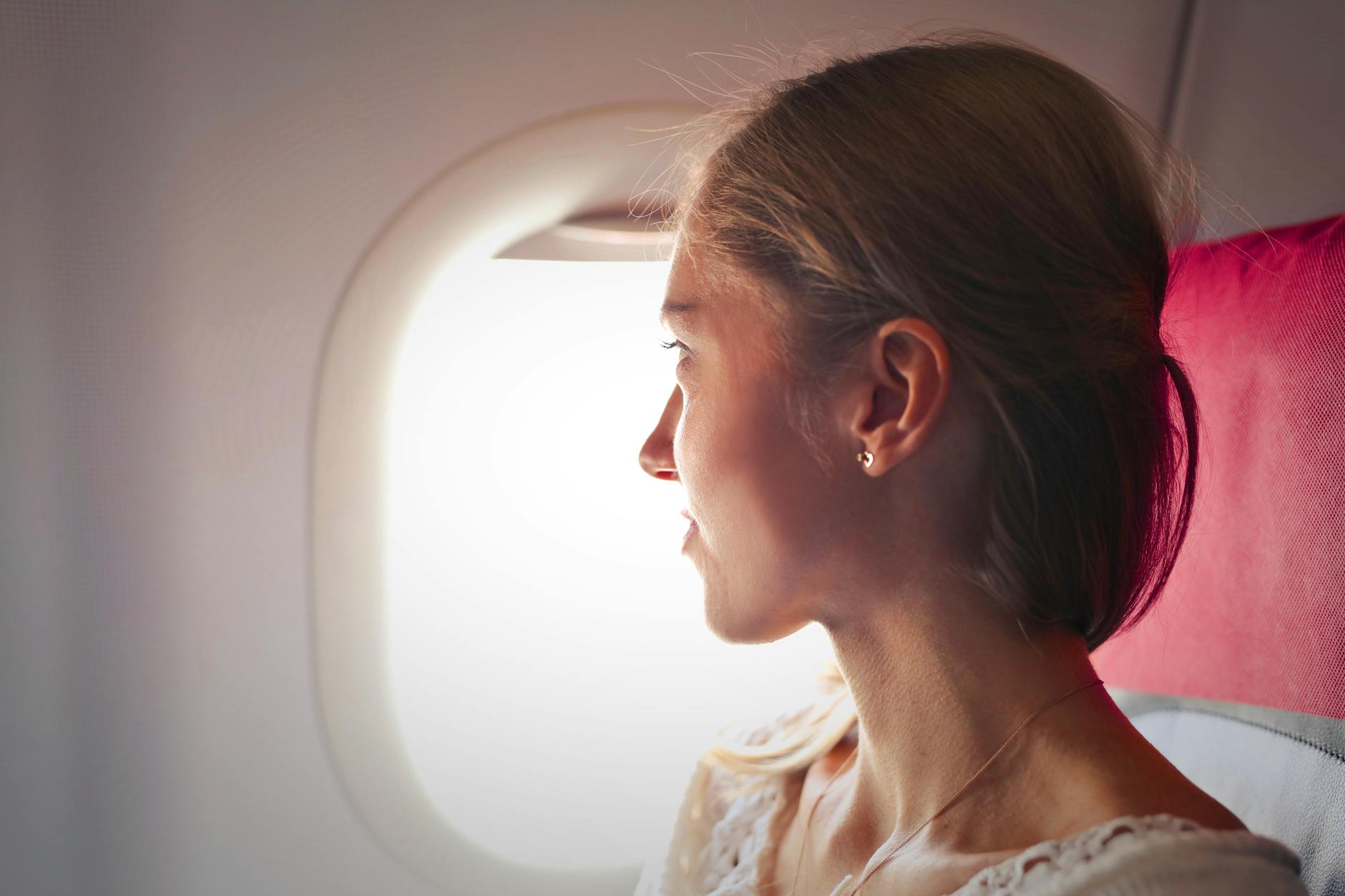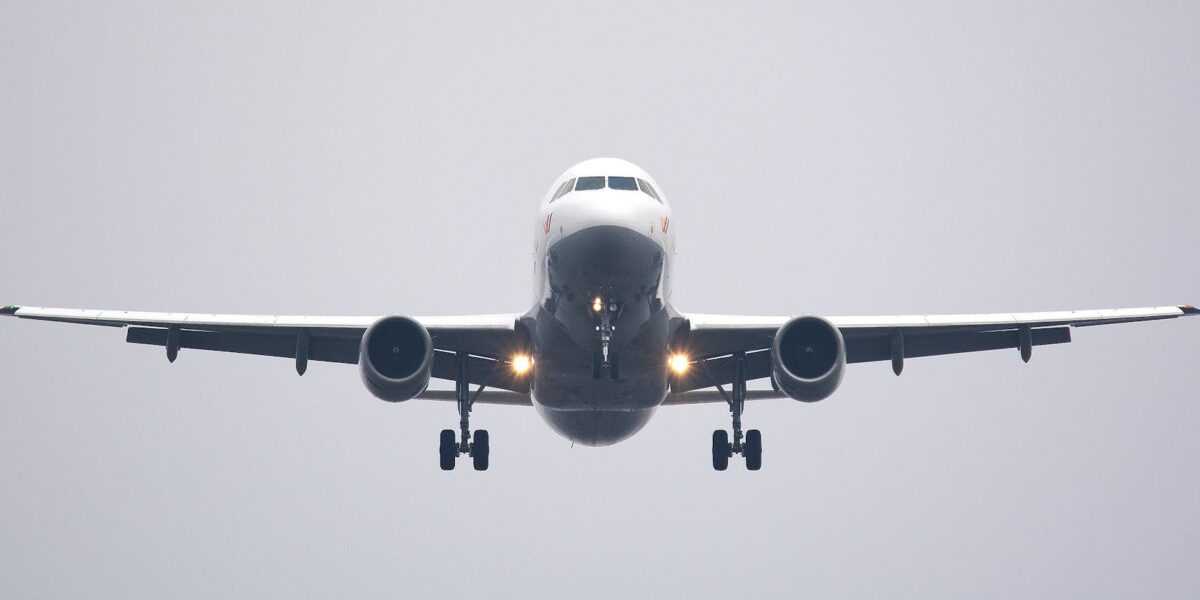If you’ve been paying attention to the news lately, you’ve probably noticed a lot of headlines about tragic and terrifying airplane accidents. From the horrific mid-air collision over the Potomac River in Washington D.C. that claimed 67 lives to the recent upside-down landing of a Delta Airlines flight in Toronto, it’s no wonder people are starting to ask, “Is flying safe?” Truth be told, I am one of those people.
As a travel editor and writer, flying is integral to my job. Not unlike commuting to work by train or driving to an office, flying is what brings me to travel conferences and allows me to attend press trips alongside other journalists, accessing destinations that inspire me to write travel articles and author books.
The recent coverage of flight incidents—from crashes to the latest news of a Delta flight filling with smoke—has left me incredibly anxious about my upcoming travel plans. While I know flying is lauded as being the safest form of transportation, the coverage of flight incidents in recent months has given many (including me) the impression that flying has become dangerous. The combination of recent headlines paired with concerns of climate change-fueled turbulence has left me wondering, is flying safe?
To answer this question (and assuage my fears), I decided to investigate and determine whether flying today is, in fact, dangerous.
Are Planes Really That Dangerous?
Before you start swearing off airplanes for good, it’s important to look at the bigger picture. Yes, the recent incidents are scary, but statistically speaking, flying is still one of the safest ways to travel, according to the 2024 Transportation Statistics Report from the Bureau of Transportation Statistics.
In 2024, there were 16 fatal accidents worldwide, resulting in 333 fatalities. While that sounds like a lot, consider this: 2023 was the safest year ever for global commercial air travel, with just six fatal accidents and 115 fatalities. When you think about how many flights take off and land every single day across the globe (upwards of 100,000), those numbers are incredibly low.
The truth is that aviation safety has improved dramatically over the past few decades. Despite the recent coverage, planes are safer, technology is better, and safety protocols are stricter than ever. So why does it feel like flying is getting even more dangerous?
What’s Behind the Recent Incidents?
There’s no denying that the recent plane accidents and incidents have shaken public confidence in flying, leaving people wondering: is flying safe? People are understandably concerned, especially when recent incidents have evolved airlines—such as Delta and American Airlines—largely believed to be safe. So, what’s going on? Here are some key factors that aviation experts believe are contributing to the current situation:
Air Traffic Controller (ATC) Shortages: One of the biggest issues facing the aviation industry right now is a shortage of qualified air traffic controllers. This high-stress job requires intense focus and quick decision-making, so when there aren’t enough controllers to handle the workload, mistakes and human error can happen. In the case of the mid-air collision over the Potomac River, for example, a single controller managed both aircrafts involved in the collision. And while the collision isn’t entirely the fault of ATC shortages, this isn’t the norm for hubs as busy as Ronald Reagan Washington National Airport.
Pilot Shortages and Inexperience: It’s not just air traffic controllers who are in short supply—there’s also a global shortage of pilots. Many experienced pilots retired early due to the COVID-19 pandemic, and training programs were disrupted, leading to a pipeline problem.
To keep up with the surge in demand for air travel, some airlines are fast-tracking less experienced pilots. While these pilots are fully certified, they might not have the same level of real-world experience as those who’ve been flying for decades.
Aviation expert Ryan Tseko has pointed out that the combination of high demand and less experienced pilots could be putting extra stress on the industry’s safety standards.
Surge in Air Travel Demand: What’s unique about this moment in time is you’re seeing two opposing forces at play: people’s fear of flying going up against a post-pandemic desire to see the world. Everyone is eager to travel again, which has led to a massive surge in air travel demand, leaving airlines and airports scrambling to keep up.
With more planes in the sky and more passengers to accommodate, the pressure is on to maintain safety standards. This increased volume can strain resources, leading to potential gaps in safety protocols.

Managing Your Flying Anxiety
If you plan to fly, the odds are overwhelmingly in your favor that your flight will be safe and uneventful. Of course, no form of transportation is completely risk-free, but statistically, you’re safer in the air than on the road. If you’re still wondering, ‘Is flying safe?’ and struggling with anxiety over your next trip, remind yourself that the headlines don’t always tell the whole story. For some tips on managing anxiety at 35,000 feet in the air, below are some helpful techniques:
Focus on Your Breathing: One of the simplest and most effective ways to reduce anxiety is through deep breathing exercises. Start by inhaling for 4 seconds through your nose. Hold your breath for 7 seconds, and then Exhale slowly through your mouth for 8 seconds. Repeat this process several times to help calm your nervous system and quickly ease feelings of panic.
The Power of Distraction: Distraction is a powerful tool. Bring along a good book, download your favorite movies, or listen to calming music or podcasts. Engaging your mind with a story or rhythm can help shift your focus away from anxiety-inducing thoughts.
Use Calming Apps: There are several apps specifically designed to help with anxiety and relaxation, such as Calm, which offers guided meditations, breathing exercises, and sleep stories, and Headspace, which helps you practice mindfulness and meditation through guided exercises.
Stay Hydrated and Avoid Caffeine: Dehydration and caffeine can worsen your anxiety. Drink plenty of water before and during your flight. Skip the coffee or energy drinks, as caffeine can heighten feelings of nervousness. Opt for herbal tea if you need something warm and soothing.
Practice Mindfulness and Grounding Techniques: Grounding exercises can help bring you back to the present moment and reduce anxiety. Try the 5-4-3-2-1 method by noticing five things you can see (looking around and naming them), four things you can touch (noticing the texture and feel), three things you can hear (focusing on ambient sounds), two things you can smell (noticing subtle scents), and one thing you can taste (enjoying a small snack or mint).
It’s understandable to feel a bit anxious with all the negative headlines, but the reality is flying remains incredibly safe. The aviation industry is aware of its challenges and is actively working to address them while regulatory bodies are tightening safety protocols, airlines are ramping up training programs, and ongoing efforts are being made to recruit and train more air traffic controllers and pilots. It’s normal to feel anxious in light of recent flight-related tragedies and events, but perspective is key in managing worries, and when in doubt, taking a step back from the news cycle can always offer some peace of mind.



Leave a Reply